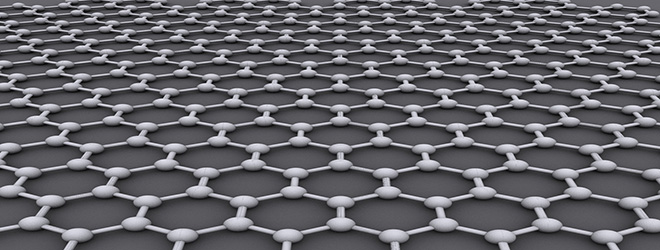As simple as the question is, the answer can be as diverse. Graphene has numerous excellent properties, as well as excellent flexibility and almost complete transparency. Due to the many advantages, the material can be used very flexibly in the first place. However, you don't have to provide all the properties for every type of application.
Purpose of application is decisive
That's why you can almost talk about different types of graphs, which are used in different ways for a specific purpose. It can be used in electronic components, in energy-saving grid systems or in solar cells and computer displays.
Graphene sets new frontiers
Secondly, graphene is an exciting substitute for existing but significantly more expensive materials (for example, as an ITO replacement in touchscreens, which is currently installed in about 90 percent of all displays) or for materials that have already reached their physical limits.

Such as silicon transistors (small switching devices that are used as memory or "decision makers" in logical grids of computers.) Over time, they became smaller and more powerful according to Moore's Law. However, physicists are already warning that this progress cannot continue and will sooner or later reach its limits. In this area, they are already considering replacing silicone with graphene and testing new limits.
Graphene revolutionizes technology
In the same way, graphene could revolutionize other areas of technology where conventional material is already reaching its limits. Possibilities for use would be as a composite material or metal alloy in aircraft construction in order to exploit the advantage of lower weight and better material thickness. Or it can be used as a substitute for silicon, which would produce cheaper and more efficient solar cells. Numerous companies such as Samsung, Nokia, and IBM are already developing graphene-based replacements for things like touchscreens, transistors, and flash memory. And the Graphene Flagship project, which is supported by the EU, has already achieved its first research successes.
Graphene opens up new areas of application
What is particularly exciting, however, is the prospect of unprecedented, novel technologies that we can currently only dream of. Just imagine the possibilities that a novel, ultra-light, ultra-thin, insanely strong, transparent, optically and electronically conductive material like graphene can offer us. Super light, sturdy clothing made of graphene, wired with batteries that change color if desired. Or a sturdy, light, small foldable house that you pull out of your backpack in an emergency to find shelter in.
Just as plastic was introduced several years ago as a substitute for wood and metal and changed our world, graphene can also change our future. In a positive sense. If we recognize the right applications for us from it, it will be impossible to imagine our everyday lives without it in the future.

